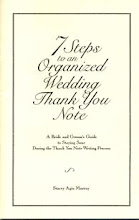 |
| LL Bean Turbo Transit Backpack |
• Use pouches that are colored and clear. This may sound confusing, so let me explain. Seeing through a container or pouch makes finding pencils, pens, and erasers a lot easier. If they are tinted a color, that’s even better. Over time, your child will for example associate blue for pencils and red for note cards. This makes it easier to grab a pouch out of the bag. Avoid loose crayons, highlighters and erasers. Everything should be in a pouch or small bag.
• Assign each pocket in the backpack its’ own function or use. For example, maybe the front small pocket will always contain the pencil case and the first large pocket- folders and paper, where as the second large compartment or pocket will house the books. Again, over time your student will instinctively associate certain pockets with certain contents. They’ll never have to guess where something is if everything “has a home”.
• Clean it out regularly. This step is the most important. I recommend each and every night, clean out and tidy up the backpack. This may not be realistic for your child but if you can get into this habit, it will really help. Otherwise, shoot for once a week. That will help keep the mess at bay.
• Label everything. Cases, pouches, books, folders and just about anything else you can think of- label it! Although kids like to write the label or title out themselves, encourage them to use your label maker. It will make it easier for everyone if the labels are clearly typed out.
• Color code folders, binders, and notepads. Choose one color to represent one subject. Perhaps your child’s math book has a book cover. Then stick to a blue folder or notebook to match it. All of these little changes can sometimes make a huge difference if you child identifies with colors to stay organized.
Amber has been serving the Chicago area as a professional organizer since January 2004. She is a Certified Professional Organizer® and specializes in residential and small business organizing. She especially enjoys working one on one with clients to customize the organizing solutions and systems to add efficiency to their space or business. Helping people problem solve difficult spaces and creating productive work spaces is very rewarding to her. Amber is a Golden Circle member of the National Association of Professional Organizers as well as local member of the Chicago chapter.
Links:
ambersorganizing.com
chicagoprofessionalorganizer.com
facebook.com/ambersorganizingllc
twitter.com/luvtoorganize


















